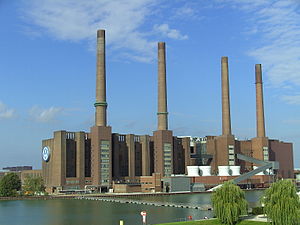This article needs additional citations for verification. (October 2009) |

The term German model is most often used in economics to describe post-World War II West Germany's means of using (according to University College London Professor Wendy Carlin) innovative industrial relations, vocational training, and closer relationships between the financial and industrial sectors to cultivate economic prosperity.[1] The two key components of the German model is a national system for certifying industrial and artisan skills, as well as full union participation in the oversight of plant-based vocation training.[2]
The German model of collective bargaining differs from the model common in other European countries and the United States.[3] In Germany, unions and employer associations bargain at the industry-region level.[3] In contrast to tripartite corporatist systems, the German government is not involved in the negotiations.[3] These large-scale agreements have broad coverage and lead to considerable standardization in wages and employment conditions across the country.[3] Some bargaining occurs at the firm level.[3]
- ^ Carlin, Wendy (1996). "West German growth and institutions, 1945-90". In Crafts, Nicholas; Toniolo, Gianni (eds.). Economic Growth in Europe Since 1945. Cambridge University Press. p. 484. ISBN 9780521499644.
- ^ Thelen, Kathleen (2004). How Institutions Evolve: The Political Economy of Skills in Germany, Britain, the United States, and Japan. Cambridge University Press. p. 63. ISBN 978-0-521-54674-4.
- ^ a b c d e Jäger, Simon; Noy, Shakked; Schoefer, Benjamin (2022). "The German Model of Industrial Relations: Balancing Flexibility and Collective Action". Journal of Economic Perspectives. 36 (4): 53–80. doi:10.1257/jep.36.4.53. hdl:10419/265721. ISSN 0895-3309.
